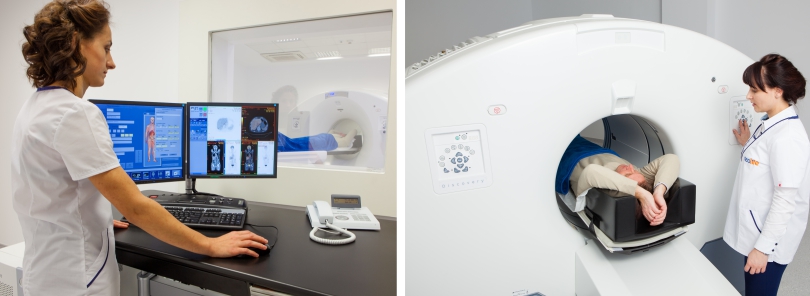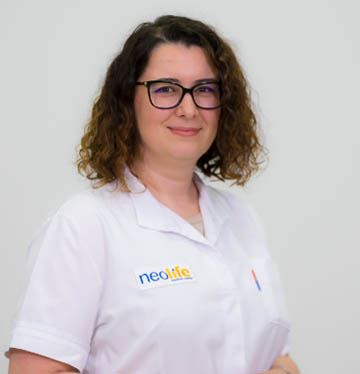PET CT - Neolife Bucharest High Performance Medical Imaging
What is PET-CT
PET-CT is an integrated equipment of medical imaging. It combines two types of scanning: PET (positron emission tomography), used to obtain functional data concerning the metabolism and cell functions and CT (computer tomography), used to obtain morphological data concerning the location and anatomical relations between the evaluated pathologic substrata.
PET-CT scanning is used to diagnose, locate, stage the evolution of the tumour, and assess the efficiency of the treatment in oncologic diseases. PET-CT equipment is used in particular in the fields of oncology and cardiology.

Discovery 610 HD PET-CT manufactured by General Electric, the device used in Neolife Medical Center, is one of the most performant devices available worldwide, designed to perform quick and very accurate scans, with very small doses of radiations.
Advantages of PET-CT
Importance of PET-CT
In conclusion, PET-CT provides information about the location of the tumour and its expansion, thus enabling the physician to offer the best treatment plan
How is the PET-CT image formed
For PET examination, a glucose molecule marked radioactively with fluorine (18F) – 18F-2 fluoro-2-deoxy-D- glucose – with the acronym FDG is used, which allows the visualisation of metabolic activity and reveals functional changes that occur, in many cases, before the anatomical and structural changes take place.
The PET device detects very small quantities of radiations, which it converts in images of the body. There is no alternative method to PET examination that could provide the same information.
A small quantity of FDG is injected through an intravenous catheter. This compound is not toxic, has been approved for certain medical procedures, and no side effects have been reported.
Afterwards, in order to ensure the efficiency of the examination, the patient is required to lie down on a couch, relaxed, without talking or moving, alone in the room (without a companion), throughout the duration of the waiting period (60 minutes), until they are lead to the examination room.
The PET-CT investigation lasts on average 2 hours, of which the actual scanning (the time the patient spends in the device) is approximately 30-40 minutes.
PET and Oncology
PET scanning also proves to be cost-efficient in oncology, because it can:
At present, in many countries with high medical standards, PET has become a fundamental component of oncology, making diagnosis faster and more efficient, saving money, time, and, most importantly, LIVES.
PET CT Medical Team - Neolife Bucharest
 Dr. Cambrea Marius
Dr. Cambrea Marius
 Dr. Mirvald Maro
Dr. Mirvald Maro
